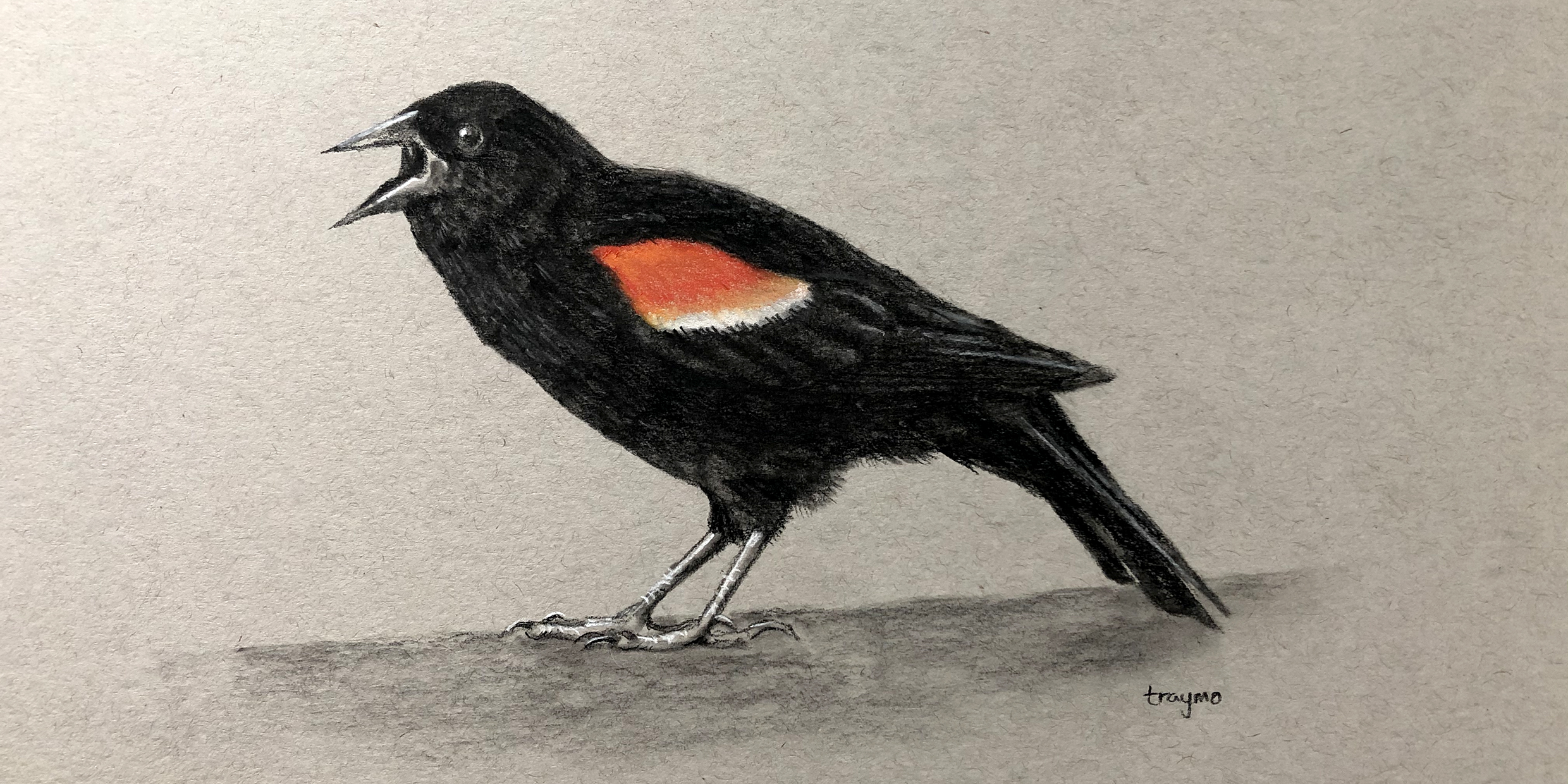Originally published 19 February 1989
Sometime within the next week and a half the red-winged blackbirds will return to Eastern Massachusetts. In my town, the earliest of the spring migrants will arrive on the 26th of February, give or take a few days. Not even an abnormally warm winter will disrupt their schedule. Their biological clocks are as punctiliously set as those of the swallows of Capistrano.
I’ll recognize the day of the red-wings’ arrival the moment I open my eyes from sleep — when my own biological clock wakes me at 6:30 a.m. precisely (Saturdays and Sundays, unfortunately, included). There will be a certain — ah — timbre to the air, a certain ineffable anticipation of spring, a certain — a certain 26ishness of February.
The birds will know too. They will know it’s the 26th. A chemical ticking in their brain will tell them so. They will be perched in the trees by Queset Brook as I walk to work. I will hear their throaty chaaack even before I see them. They will hunch forward, lift their wings, and flash their gaudy epaulets. They will know the date as well as I do. Their calendar is in their brain.
Keeping in synch
Like other birds, red-wings bear within their bodies biological clocks that control the timing of migration, navigation, courtship, mating, and molting. These clocks are sensitive to changes in the environment; it is probably the increasing length of daylight, monitored by internal clocks, that sets off the signal for the birds to leave their winter range in the southern United States and head north.
Changes in light and darkness adjust the clocks, keeping them in phase with the day or season. But if birds are kept under conditions of constant light and temperature their internal clocks keep ticking, with a circadian (circa-dian, roughly daily) and circannual (roughly annual) rhythm.
Anyone who has suffered jet-lag knows that biological clocks are not unique to birds. After a quick trip from America to Europe, for example, our internal clocks keep running on the old time, and several days will pass before they are altered to agree with the new environment. Humans, mosquitoes, morning-glories, and even bread molds possess circadian clocks. Only the most primitive single-cell organisms are without internal timekeepers.
The mimosa plant was one of the first organisms to reveal its innate timekeeping. In the 1700s French scientists maintained the plants under conditions of constant light and discovered that the leaves continued to open and close at approximately daily intervals — with a period of about 22 hours (the roughly-daily) instead of 24 hours. Without adjustment by exposure to natural patterns of day and night the mimosa’s clock runs somewhat fast.
But what are these internal clocks, where are they located, and what makes them tick? Something wakes me at 6:30 a.m., day in and day out? What is it that causes the blackbird to arrive on Feb. 26th?
If the pineal gland in the brain of a sparrow is removed, the sparrow loses its rhythmicity. If the pineal of a sparrow with 12-hour “jet lag” (raised in conditions where the cycle of light and darkness is reversed) is transplanted into a sparrow whose pineal has been removed, the recipient takes on the rhythm of the donor. The pineal seems to carry the pacemaker. But perhaps the pineal is only necessary for the proper functioning of a clock which is located elsewhere, a clock which the recipient sparrow somehow quickly resets.
A report in a [1989] issue of Nature describes a more decisive search for the locus of the circadian clock in hamsters. Hamsters are perfect for biorhythm research because their wheel-running activity, which normally takes place at night, is easily monitored. Hamsters continue to take their daily run on a wheel even if kept in constant light. It is thought that the hamster’s clock — and those of other mammals — lies in that part of the brain called the suprachiasmatic nuclei (SCN). In the absence of external stimuli, the free-running rhythm of hamster circadian clocks is never less than 23.5 hours.
A 22-hour hamster
Well, almost never. Martin Ralph of the University of Virginia found a mutant hamster with a 22-hour circadian clock, from which he derived a line of short-rhythm offspring. He showed that he could shorten the rhythm of wheel-running activities in normal hamsters by surgically excising their SCN, and inserting SCN from fetal mutants — turning 24-hour hamsters into 22-hour hamsters. A more convincing demonstration of the location of the mammalian circadian clock could hardly be imagined.
There is still much to be done in figuring out what it is that ticks and how it ticks. Locating the gene or genes that control circadian rhythms will help researchers find the answers. Meanwhile, the certainty that circadian clocks are internal and biochemical suggests whimsical predictions about the future of biological rhythmicity.
How about anti-jet lag pills that could be used to temporarily suppress the circadian rhythm after a long flight, allowing more efficient resetting of the human biological clock? Or Saturday pills that slow the clock on weekends, allowing an extra hour or two of sleep?
Or February-26th pills, bearing the ingredients of a finely-tuned circannual rhythm (derived, perhaps, from the pineals of red-winged blackbirds) that would wake me up an hour early on the day of the red-wings’ return, so that I could be there in the water meadow by the brook when the birds stake out their territory, hear the first chaaack of the new season, and marvel again at the rhythms imparted to all creatures by a fine Swiss clockmaker called evolution?



